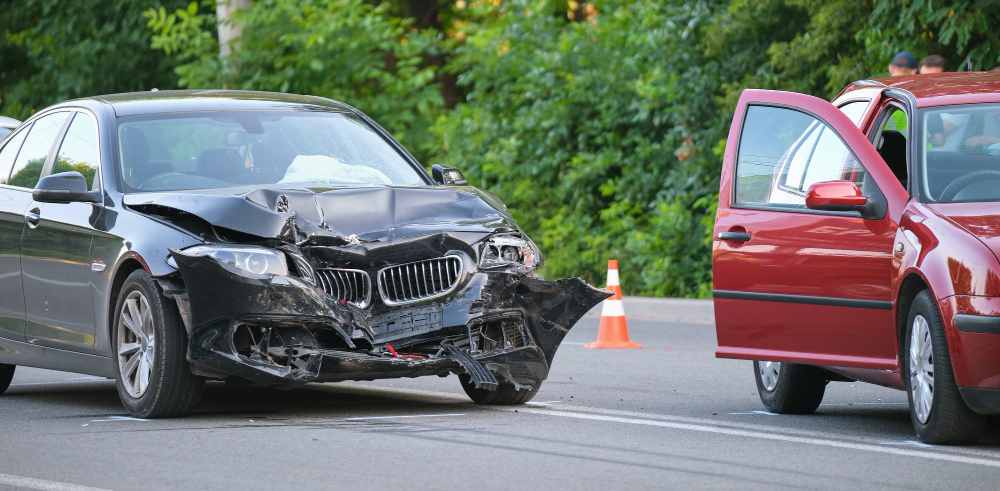Oregon total loss threshold is a situation in which the car insurance company declares that it’s not worth repairing the car, and is also known as a car being totaled. This situation takes place when the sum of the repair cost and the salvage value of your vehicle equals or exceeds its actual cash value. Let’s take 75% as the percentage and assume that you have a car with $85,000 ACV. 75% of your ACV is $63,750. So, if the cost of repairs plus your vehicle’s salvage value is $63,750 or more, your car will be declared a total loss.
ACV stands for actual cash value for a vehicle, which is the market value immediately before an accident. Remember that ACV isn’t the value you paid while buying the car. When you file a total loss threshold claim, you receive the ACV settlement amount and not the original price of your vehicle.
Salvage value refers to the market value for a vehicle immediately after it’s declared a total loss. In other words, salvage value is the market value of a car when it’s damaged. Suppose your vehicle is worth $85,000 before the accident, and after being damaged, its value drops to $33,000; then $33,000 is its salvage value.
A total loss threshold limit is a certain percentage set by the state government that determines whether a car is a total loss. Suppose your car’s repair cost and salvage value sum to $85,000, and its ACV is $85,000. If the car is a total loss, the total loss threshold is 100% in that state.
This percentage is used in TLF, which is the Total Loss Formula. According to this rule, your car isn’t a total loss as long as its cost of repair plus salvage value is equal to the actual cash value for the vehicle or more than that. The total loss threshold in Oregon is 80%, so if your car’s ACV is $85,000, it can’t be declared a total loss as long as its repair cost plus salvage value equals or exceeds $68,000.
Understanding an Oregon total loss threshold claim is crucial because it’s the right that allows car owners to recover their losses from the car insurance company. If your car is involved in an accident and you believe that the other driver is at fault, you can file a claim against their insurance company. You can also file a claim against your own car insurance company.

Before you file a claim, you should first learn how insurance companies compute a total loss settlement amount. It will help you negotiate a higher payout from the company.
Generally, insurance companies determine if a car is a total loss or not using its actual cash value and the threshold limit. In exceptional cases, the insurance company pays a higher amount, such as when the value is already agreed upon (generally, it happens for vintage cars). Factors, such as a car's model, make, mileage, age, etc., are also considered while deciding a vehicle’s ACV.
Insurance companies use their proprietary software program to calculate the actual cash value for the vehicle. You can’t use their programs, but you can opt for resources, including Kelly Blue Book, Auto Trader, or Edmunds. You should assess classified advertisements that include prices of cars with similar models, makes, and years.
If you have receipts of some recent repairs or upgrades, they can be used in calculating the car’s ACV. Suppose your vehicle has a new transmission; it can significantly influence the payout.
As per the Oregon total loss threshold laws, you can conduct your research if you believe that the valuation was not fair. You can determine the market value of your car and negotiate for a higher payout if you think the current settlement offer is less than that. In the second option, you can hire an attorney experienced in car accident cases and file a lawsuit against the insurance company.
To prove your point and get a higher settlement amount, you need to have hard evidence, such as an appraisal report and other documents, to show the value of your car.
There are specific rules and regulations related to the total loss threshold in Oregon that insurance companies must follow:
At ADR Claims, we are a team of professional appraisers dedicated to helping people determine the accurate market value of their vehicle. We conduct a thorough inspection of a car and consider every aspect to determine its market value. Whether you need help with a total loss claim, a diminished value claim, or a vintage car appraisal, we are just a call away. Book your free quote today!
Our quick and simple appraisal process can help you recoup vehicle-related losses.